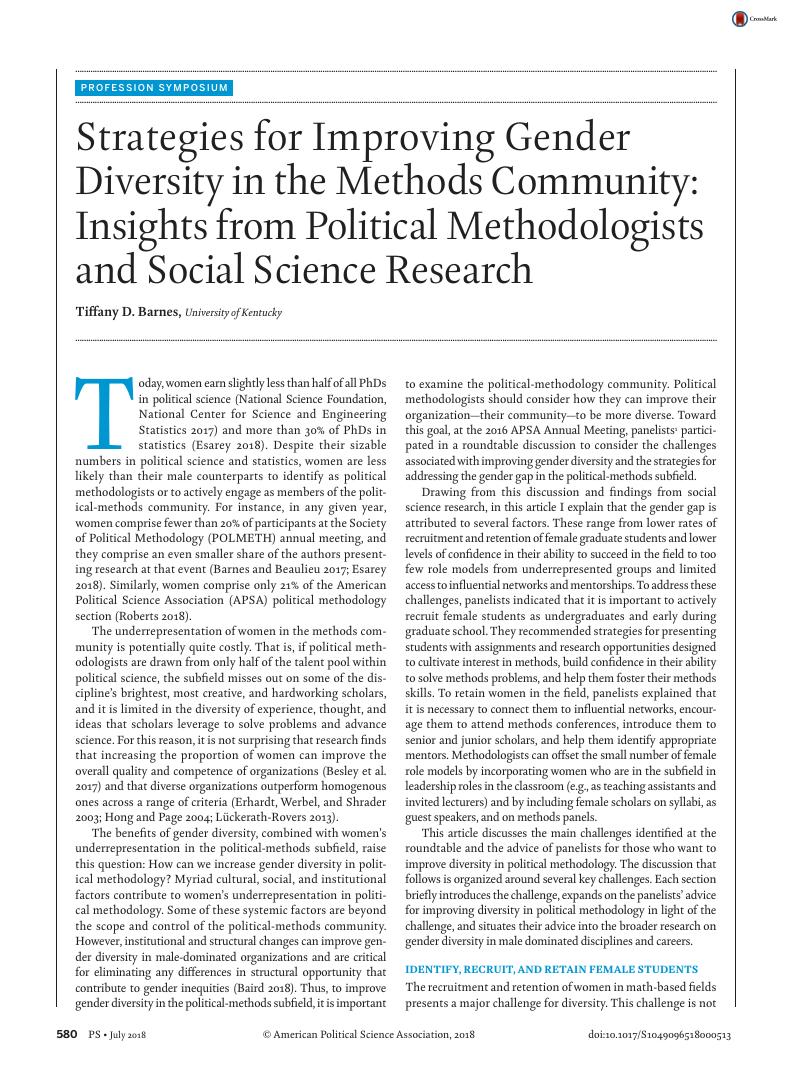Crossref Citations
This article has been cited by the following publications. This list is generated based on data provided by Crossref.
Saraceno, Joseph
2020.
Disparities in a Flagship Political Science Journal? Analyzing Publication Patterns in the Journal of Politics, 1939–2019.
The Journal of Politics,
Vol. 82,
Issue. 4,
p.
e45.
Bauer, Kelly
2021.
The Palgrave Handbook of Political Research Pedagogy.
p.
151.
Madhusudan, Vandana
2021.
Creating a Culture of Diversity and Inclusiveness in India Inc..
p.
99.
Bauer, Kelly
2023.
The Palgrave Handbook of Teaching and Research in Political Science.
p.
149.
Braun, Maike
Heintz, Laura
Kruschinski, Simon
Trepte, Sabine
and
Scharkow, Michael
2023.
Gender diversity at academic conferences—the case of the International Communication Association.
Journal of Communication,
Vol. 73,
Issue. 6,
p.
601.
Henshaw, Alexis
2024.
Thinking Big? Toward a Pedagogy of Critical Data Studies in Political Science.
Journal of Political Science Education,
Vol. 20,
Issue. 4,
p.
623.



